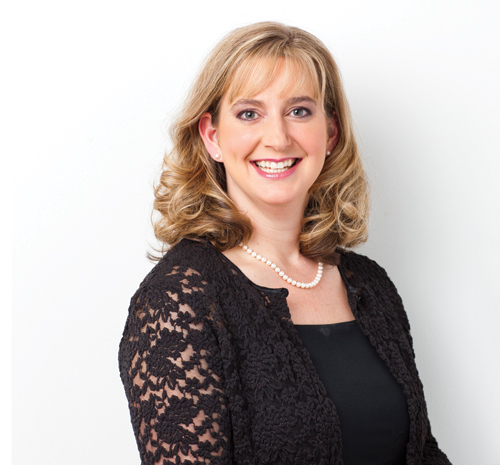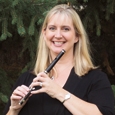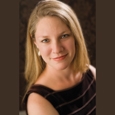
Julie Duncan Thornton has played flute and piccolo with the Colorado Symphony in Denver since 1997. She also teaches flute at the Lamont School of Music at the University of Denver.
What led you to focus on piccolo professionally rather than flute?
I had taken some auditions and been runner up or in the finals for several principal and second flute positions when the piccolo position at the Colorado Symphony opened up. I had worked with the Colorado Symphony’s conductor Marin Alsop at The National Orchestral Institute and was excited about working with a woman conductor and living in beautiful Colorado.
There were over 90 players auditioning for the position. I was well prepared and decided that if they liked me, great, and if not, I would keep practicing and wait for the next opportunity. Elaine Lenicheck, who was the orchestra’s previous piccolo player for 43 years, was the proctor. I remember thinking, “This is the nicest lady ever.” She really put me at ease.
What were some of the most helpful aspects of your piccolo studies?
Walfrid Kujala is my flute and piccolo hero. I always wanted to do my best for him and learn as much as I could from his amazing teaching style and vast knowledge. He is such an inspiring teacher. At Northwestern, there were auditions every quarter for ensemble placement. The audition material included four flute excerpts and one piccolo excerpt. For the first year and a half of my studies, I practiced the piccolo excerpts on the flute and borrowed someone’s piccolo as I went into each audition. During my sophomore year, Mr. Kujala helped me pick out my first instrument.
Now that I am teaching at The University of Denver’s Lamont School of Music, I realize the opportunity to play piccolo in the Wind Ensemble at Northwestern was an excellent training ground. The piccolo parts were high, unrelenting, and difficult. Intonation was always a challenge, but playing with the group gave me valuable experience.
I also attended the Solti Project at Carnegie Hall where I played piccolo on Shostakovich’s Symphony No. 9 and Bartók’s Concerto for Orchestra. At the Aspen Music Festival, I received the piccolo fellowship for three summers, so that added to my piccolo repertoire and expertise.
What was your first professional orchestral experience?
It came when I was subbing in the Houston Symphony during my graduate studies at Rice University. I remember some concerts when the conductor Christoph Eschenbach would say, “Oh, we did this on tour last summer, so we do not need to rehearse this. We’ll just play it at the concert.” I was thinking, “But, I’ve never played this before.” It was important to be well prepared. I listened to the pieces and practiced with recordings. For many Pops shows we received the music the day of the concert, and there was no way of knowing what it would be. I remember one time in a concert when everyone stopped, but I continued playing – hoping it was actually a solo. Thank goodness it was. It is essential to come in prepared and remain calm.
What are you favorite orchestral works to perform as a piccolo player?
I love anything by Shostakovich. I also still enjoy Stars and Stripes – especially playing it at Red Rocks Amphitheater in Colorado. It is a rock star moment. In high school when I was in the Seattle Youth Symphony, we performed Mahler’s Symphony No. 1. At the end of the performance I had tears streaming down my face. I turned to the flutist next to me, and she also was crying. The power of music is truly amazing.
How do you approach piccolo playing?
I think of my piccolo playing as flute playing. I think this started when I was a college freshman and did not have a piccolo. I practiced on flute and then picked up a piccolo right before I played for auditions. I have always thought of the piccolo as a miniature flute where everything is just a little more condensed. People often tell me that they knew it was me playing because my piccolo playing sounds like my flute playing.
Ideally I spend two thirds of my practice time on flute and one third on piccolo. With my job now, that does not always happen. If I am playing Bartók Concerto for Orchestra at a 9:30 A.M. rehearsal, I will spend most of my warmup time on the piccolo.
What are your thoughts on teaching?
I am really enjoying working with college students again. When I had my first daughter, I wanted to spend as much time with her as I could while still performing in the Colorado Symphony, so I left my position at Colorado State University. When the opportunity came up in 2014 to work at the University of Denver, my two girls were in elementary school, and it was the perfect time for me to start teaching again.
It is exciting to share everything that I have learned in my career so far and guide my students as they work toward their goals. Flute playing has always come somewhat naturally to me in that I did not always know what I was doing or why I was doing it. Teaching requires me to organize my thoughts about playing and put them into words. I continue to learn along with my students. One of the beautiful things about music is that we are constantly evolving.
It has also been interesting going back to teaching now that I am a mom because I see my students through a parent’s eyes. They have their whole future ahead of them, and I have a big job to guide them. If students have other interests, I encourage them to get a Bachelor of Arts degree or to double major with another area of interest so they can be as well-rounded as possible. I also think that strong business knowledge is very important for today’s musicians. I tell my students that there are no guarantees in this line of work. There are so many different things you can do in music; you have to find your niche and what speaks to you.
What do you like to do in studio class?
My favorite thing is to play long tones together. Then, we go around the room, and I give each student feedback. It really is so helpful because the group reinforces what I am saying, and then students know that it is not just what their teacher is telling them. I play in studio class often. We do scales together and perform for each other. I emphasize that we are all working together to improve and that it is important that we support and learn from each other.
When do you introduce piccolo to students?
I prefer to focus on flute fundamentals freshman year. The fundamentals of flute playing and musicianship carry over to piccolo playing. Once I feel that a student is ready, I add in piccolo. I start them with a slow movement from a Bach Sonata. I explain that playing piccolo is just like playing a smaller version of the flute. It should be just as relaxed and effortless as playing the flute. Once that concept is mastered, we move on to Vivaldi and then the many wonderful contemporary pieces in the repertoire.
What are your favorite piccolo concertos?
I love the Vivaldi concertos and the Liebermann Concerto for Piccolo and Orchestra. Right now, I really want to learn the Avner Dorman Concerto for Solo Piccolo, strings, and piano (2001). I am also very excited to work on Eric Ewazen’s Piccolo Concerto which he has promised to send me soon.
What is your favorite part of being a musician and a flutist?
I love the power of music and sharing that with others. It is such an important art form that needs to be preserved for future generations. I also love that my children have had some amazing experiences through the my musical endeavors and those of my husband, Michael Thornton, who is principal horn of the Colorado Symphony. There was an 18-month period where we were in South America three times as a family. Our children have made friends from all over the world. This past December we went to Cape Town, South Africa with Mike while he performed a concerto with their symphony. Every summer we perform at the Washington Island Music Festival in Wisconsin. This is our favorite musical event, and our kids have been there almost every summer of their lives. Once they ran a lemonade stand by the ferry dock and donated their earnings to the festival.
I also thoroughly enjoy the orchestral repertoire. It is so exciting to be working with 90 other musicians. When I was a student, I was terrified at the idea of playing Tchaikovsky’s Symphony No. 4 and other big piccolo solos in orchestra. I asked Mr. Kujala how he did it without getting nervous. He said that every week there is often a different conductor, and it is just so interesting to see their different interpretations of the music. As I get older, I better understand what he meant. It has become more fun, and I do not feel the stress.
Do you have any upcoming recording projects?
I just recorded a CD of works for flute and horn with my husband and pianist Susan Grace over the summer. It should be released in 2017. We recorded three contemporary works by Adrienne Albert, Paul Basler, and Chris Roze. We were fortunate that each composer was there for the recording. We also recorded the three Doppler pieces with flute and horn. The recording was a wonderful experience especially with the amazing British producer Andrew Keener at the helm. I am confident that the joy that we had in making the CD will come out in the final product.
 Julie Thornton, a native of Mercer Island, Washington, studied with Richard Breitstein in high school and is a graduate of Northwestern University (BM, Walfrid Kujala) and the Eastman School of Music (MM, Bonita Boyd). While pursuing a DMA at Rice University’s Shepherd School of Music, she was appointed to her position with the Colorado Symphony. Thornton has performed extensively with the New York Philharmonic, the Saint Louis Symphony, the Oregon Symphony, the Minnesota Orchestra, and the Houston Symphony. She has also performed with the Grand Teton Festival Orchestra, Strings in the Mountains, the Aspen Music Festival, the Solti Orchestral Project at Carnegie Hall, the National Repertory Orchestra, the National Orchestral Institute, and the Music Academy of the West. Recently she was a featured performer and teacher for Festicamara in Medellín, Colombia and Festival Internacional de Inverno de Campos do Jordão in Brazil.
Julie Thornton, a native of Mercer Island, Washington, studied with Richard Breitstein in high school and is a graduate of Northwestern University (BM, Walfrid Kujala) and the Eastman School of Music (MM, Bonita Boyd). While pursuing a DMA at Rice University’s Shepherd School of Music, she was appointed to her position with the Colorado Symphony. Thornton has performed extensively with the New York Philharmonic, the Saint Louis Symphony, the Oregon Symphony, the Minnesota Orchestra, and the Houston Symphony. She has also performed with the Grand Teton Festival Orchestra, Strings in the Mountains, the Aspen Music Festival, the Solti Orchestral Project at Carnegie Hall, the National Repertory Orchestra, the National Orchestral Institute, and the Music Academy of the West. Recently she was a featured performer and teacher for Festicamara in Medellín, Colombia and Festival Internacional de Inverno de Campos do Jordão in Brazil.
* * *
Thoughts on Piccolo and Flute
How do you align the headjoint and body?
I like to line up the top of my keys with the embouchure opening.
Do you wear one or two ear plugs?
I really do not like to wear earplugs. When I am practicing something really high and loud, I will wear one in each ear. In orchestra concerts, I usually only put them in for really loud passages when I am not playing. In that case, I may only put an earplug in the ear closest to the loudness.
How do you warm up?
I like to do octave slurs to warm up my embouchure, fast scales to warm up my fingers, and long tones to find my best sound.
Do you have any tuning tricks when playing in an orchestra?
Listen, listen, listen, and play with confidence at every dynamic so that the sound can blend well with others.
Do you single tongue most things or do you double tongue?
I go back and forth with both depending on the tempo.
What alternate fingerings do you use on a regular basis?
For a quiet C# above the staff on piccolo I love LH 23, RH 234






